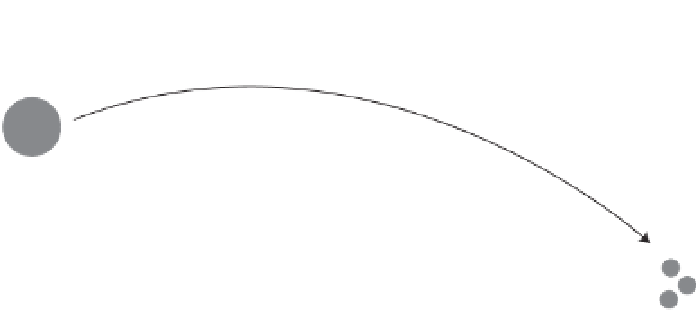Environmental Engineering Reference
In-Depth Information
2) Declining native species
in response to introduced
predator
3) Innoculation of naive native population
ahead of the moving wall of introduced
predator. No declines.
1) Experienced native
population
Figure 21.2
A proposed methodology to increase variation in adaptive traits in native populations by introducing genotypes
collected from populations that have already experienced a particular disturbance. Transmission of benefi cial traits could be
through the introduction of genetic variation, or, in the case of animal populations, transmissions of learned adaptive
behaviours. The stress in this fi gure is invasive species, but a similar tactic could be used for other types of disturbances,
including disease, N deposition or increased fi re frequencies. (From Schlaepfer
et al
. 2005 .)
species to evolve in response to single factors may be
very different from evolutionary responses to more
than one factor, which are diffi cult to predict, even in
laboratory situations (Harshman & Hoffmann 2000).
Failure of species to adapt to changing environments
is the cause of
extirpations
and
extinctions
, and historic
evidence provides many examples of shifts in commu-
nity composition and species dominance over time. The
evidence for these shifts is discussed in detail below.
within a functional group or shifts in the dominance
of functional groups, which at their most extreme
often can be considered shifts in ecosystem types, such
as from forest to grassland. Shifts can be either trans-
ient or cyclical, in response to recurring disturbances,
for instance, or directional, in response to directional
changes in the environment or recovery from infre-
quent disturbances (Smith
et al
. 2009 ; Figure 21.3 ).
Anticipating these shifts may help restoration projects
track environmental change over time.
21.3 LOCAL PROCESSES: SPECIES
REORDERING AND TURNOVER
21.3.1
Successional dynamics
Species reordering (becoming relatively more or less
abundant) and turnover (gain or loss) should be
expected to occur in a restoration site over time. These
shifts could consist of shifts in the dominance of species
Classic models of
succession
propose that assem-
blages are dynamic and progress towards a fi nal state
(climax community) along a continuum that is regu-
lated by internal forces such as species interactions.














